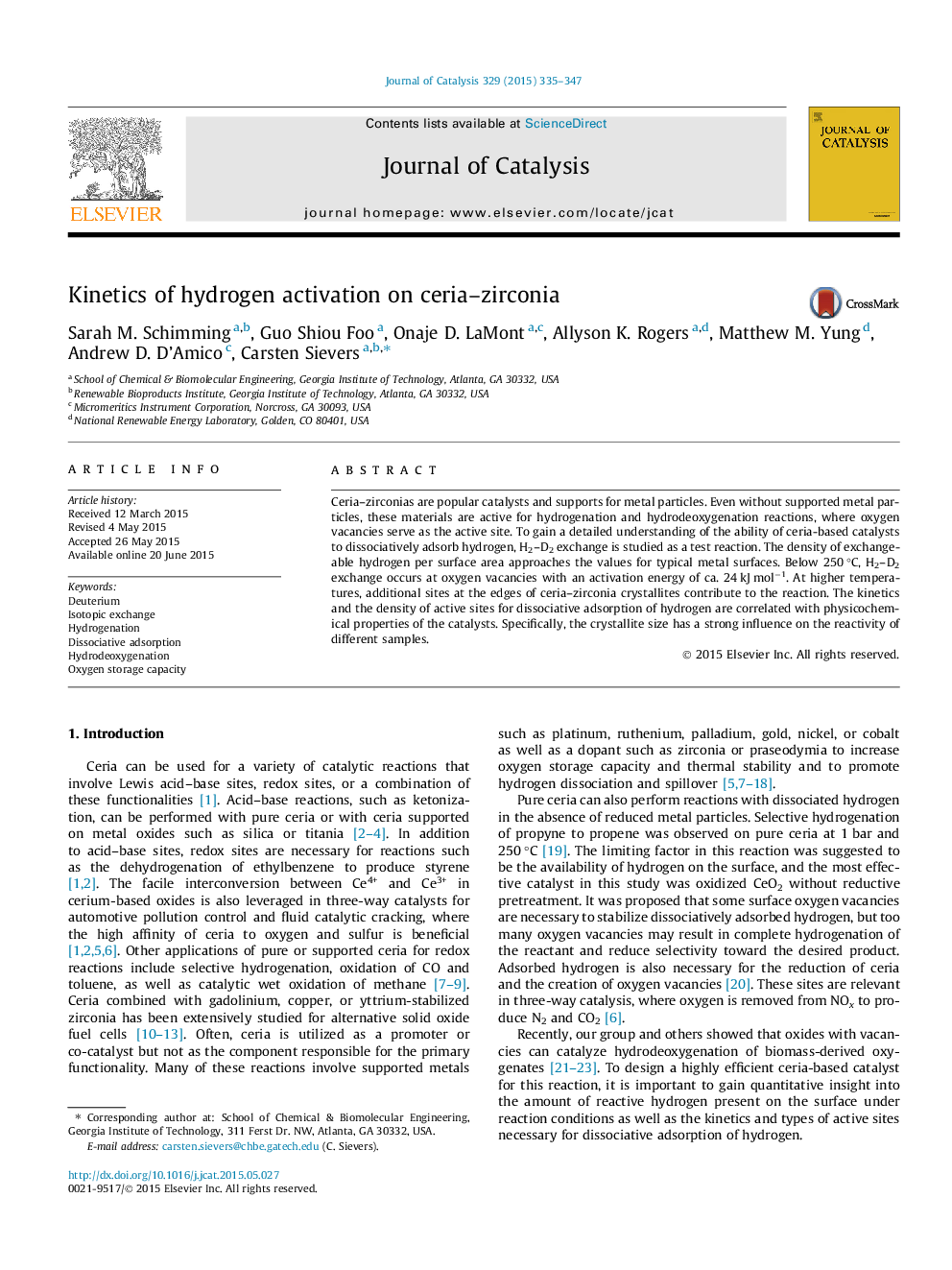| Article ID | Journal | Published Year | Pages | File Type |
|---|---|---|---|---|
| 60821 | Journal of Catalysis | 2015 | 13 Pages |
•Hydrogen can adsorb dissociatively on ceria, zirconia, and ceria–zirconia.•Oxygen vacancies are the most active sites of hydrogen–deuterium exchange.•Additional active sites are found at the edges of crystallites.•The crystallite size has a strong influence on the reactivity of ceria–zirconia.•The density of exchangeable hydrogen approaches that on a metal surface.
Ceria–zirconias are popular catalysts and supports for metal particles. Even without supported metal particles, these materials are active for hydrogenation and hydrodeoxygenation reactions, where oxygen vacancies serve as the active site. To gain a detailed understanding of the ability of ceria-based catalysts to dissociatively adsorb hydrogen, H2–D2 exchange is studied as a test reaction. The density of exchangeable hydrogen per surface area approaches the values for typical metal surfaces. Below 250 °C, H2–D2 exchange occurs at oxygen vacancies with an activation energy of ca. 24 kJ mol−1. At higher temperatures, additional sites at the edges of ceria–zirconia crystallites contribute to the reaction. The kinetics and the density of active sites for dissociative adsorption of hydrogen are correlated with physicochemical properties of the catalysts. Specifically, the crystallite size has a strong influence on the reactivity of different samples.
Graphical abstractFigure optionsDownload full-size imageDownload high-quality image (127 K)Download as PowerPoint slide
